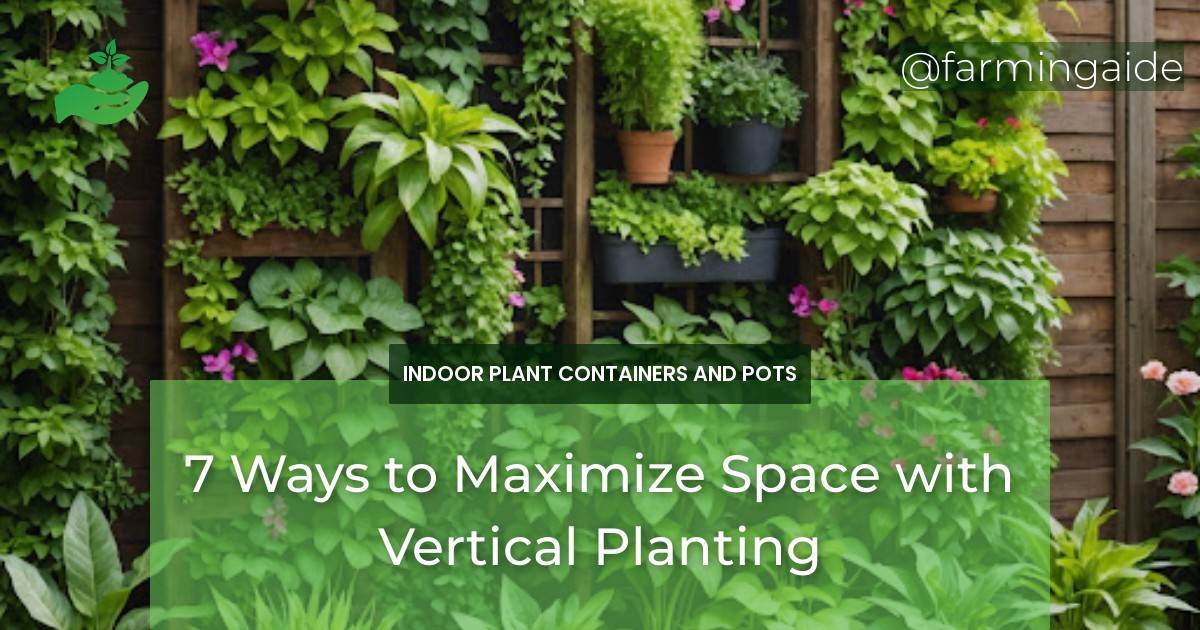Are you tired of sacrificing style for space in your garden? Do you wish you could grow your favorite plants without sacrificing precious yard space? Look no further! Vertical planting is the solution to all your small-space gardening woes. By maximizing your space with vertical planting, you can create a lush oasis in even the smallest of areas. In this article, we’ll explore the benefits of vertical gardening, choosing the right plants, and provide you with expert tips and techniques to get you started.
Key Takeaways
- Maximize space with vertical planting techniques
- Choose the right plants for vertical spaces
- Understand the benefits of vertical gardening
- Learn vertical gardening techniques and maintenance tips
- Get creative with DIY vertical garden projects
Introduction to Vertical Planting
Vertical planting, also known as living walls or green walls, is a method of growing plants upwards using a trellis, wall, or other support system. This innovative approach to gardening has gained popularity in recent years, especially among urban gardeners with limited space. By utilizing vertical space, you can create a thriving garden in even the smallest of areas, making it perfect for city dwellers, apartment balconies, or small backyards.
In addition to maximizing space, vertical planting offers a range of benefits, including improved air quality, reduced noise pollution, and increased biodiversity. Whether you’re a seasoned gardener or a beginner, vertical planting is an excellent way to add some greenery to your life.
Benefits of Vertical Gardening
So, why should you consider vertical gardening? For starters, it’s a great way to:
- Maximize space in small gardens or balconies
- Improve air quality by absorbing pollutants and releasing oxygen
- Reduce noise pollution by acting as a sound barrier
- Increase biodiversity by providing a habitat for local wildlife
- Enhance aesthetic appeal with a lush, green wall
Understanding Your Space
Before you start planting, it’s essential to understand your space. Take note of the following factors:
- Lighting: How much direct sunlight does your space receive?
- Temperature: What is the average temperature in your space?
- Humidity: Is your space prone to dryness or moisture?
- Wind: Is your space exposed to strong winds?
Choosing the Right Plants for Vertical Spaces
Not all plants are created equal when it comes to vertical gardening. You’ll want to choose plants that thrive in vertical conditions and can tolerate the unique challenges of vertical gardening. Some ideal plants for vertical gardens include:
ALSO READ
Ideal Plants for Vertical Gardens
| Plant | Description |
|---|---|
| Succulents | Low-maintenance, drought-tolerant, and perfect for small spaces |
| Cascading Flowers | Trailing flowers like petunias, begonias, and fuchsias add color and texture |
| Ivy | Easy to train, ivy is perfect for creating a lush, green wall |
| Herbs | Many herbs, like basil, mint, and rosemary, thrive in vertical conditions |
Plant Care in Vertical Settings
When it comes to caring for your vertical garden, remember to:
- Water carefully, as vertical gardens can be prone to drying out
- Fertilize regularly to promote healthy growth
- Prune and train plants regularly to maintain shape and promote growth
- Monitor for pests and diseases, taking action promptly if necessary
Vertical Gardening Techniques
Now that you’ve chosen your plants, it’s time to learn some vertical gardening techniques. These include:
ALSO READ
Wall Planters and Trellises
Use wall-mounted planters or trellises to create a stunning vertical garden. You can:
- Attach planters to a wall or fence using brackets or screws
- Use a trellis to train vining plants like ivy or clematis
Hanging Baskets and Shelves
Hanging baskets and shelves are another great way to add some greenery to your space. Try:
- Hanging baskets from a porch or balcony railing
- Using shelves to create a tiered vertical garden
Maximizing Light in Vertical Gardens
Lighting is crucial for plant growth, so it’s essential to maximize light in your vertical garden. Here are a few tips:
Positioning for Optimal Sunlight
Position your plants to receive optimal sunlight. Consider:
- Orienting your vertical garden towards the sunniest direction
- Using mirrors or reflective surfaces to bounce light onto plants
Supplemental Lighting Solutions
If natural light is limited, consider supplemental lighting solutions like:
- LED grow lights
- Fluorescent lights
Watering and Maintenance Tips for Vertical Gardens
Proper watering and maintenance are crucial for a thriving vertical garden. Here are some tips:
Efficient Watering Systems
Use efficient watering systems like:
- Drip irrigation systems
- Soil moisture sensors
Regular Maintenance Practices
Regular maintenance is essential for a healthy vertical garden. Remember to:
- Water carefully to avoid overwatering
- Fertilize regularly to promote healthy growth
- Prune and train plants regularly to maintain shape and promote growth
Creative Vertical Garden Ideas
Get creative with your vertical garden by trying:
DIY Vertical Garden Projects
Try DIY projects like:
- Upcycling old pallets or containers
- Creating a living wall using a trellis or lattice
Innovative Vertical Garden Designs
Take inspiration from innovative designs like:
- Vertical gardens integrated into architecture
- Hydroponic or aeroponic systems
Conclusion and Future of Vertical Planting
In conclusion, vertical planting is an innovative solution for maximizing space in small gardens or balconies. By choosing the right plants, understanding your space, and utilizing vertical gardening techniques, you can create a thriving oasis in even the smallest of areas. As the demand for sustainable and space-saving gardening solutions continues to grow, the future of vertical planting looks bright.
Whether you’re a seasoned gardener or a beginner, we hope this article has inspired you to give vertical planting a try. Happy gardening!


